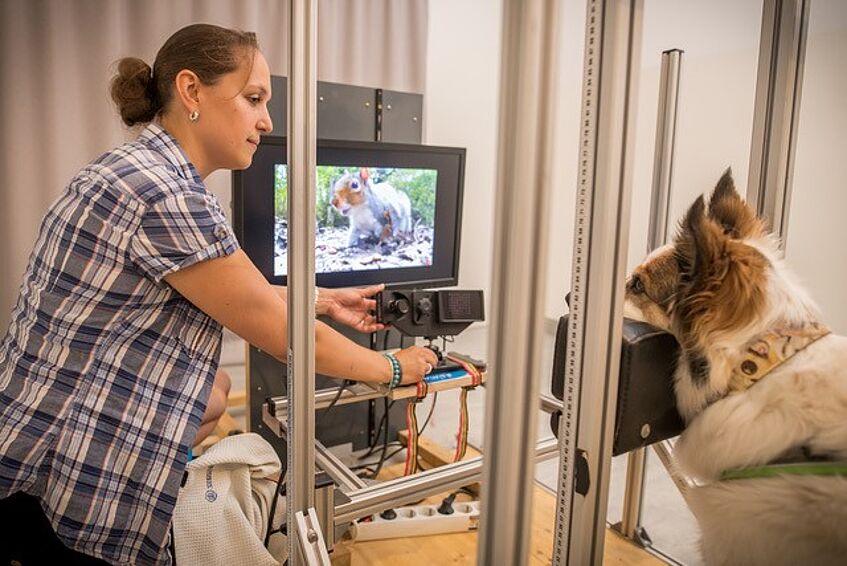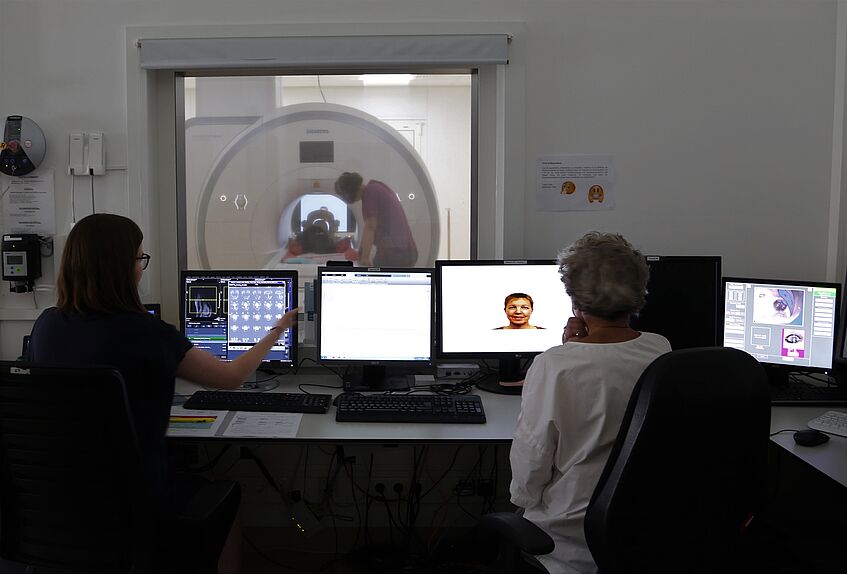Publications
- Boch, M., Karl, S., Wagner, I.C., Lengersdorff, L.L., Huber, L.*, & Lamm, C.* (2024). Action observation reveals a network with divergent temporal and parietal lobe engagement in dogs compared to humans. Imaging Neuroscience, doi: 10.1162/imag_a_00385
- Boch, M., Karadachka, K., Loh, K. K., Benn, R. A., Roumazeilles, L., Bertelsen, M. F., Manger, P. R., Wriggelsworth, E., Spiro, S., Spocter, M. A., Johnson, P. J., Avelino-de-Souza, K., Patzke, N., Lamm, C., Miller, K. L., Sallet, J., Khrapitchev, A. A., Tendler; B. C., & Mars, R. B. (2024). Comparative neuroimaging of the carnivoran brain: Neocortical sulcal anatomy. bioRxiv, doi: 10.1101/2024.06.03.597118
- Boch, M., Huber, L., & Lamm, C. (2024). Domestic dogs as a comparative model for social neuroscience: Advances and challenges. Neuroscience & Biobehavioral Reviews, doi: 10.1016/j.neubiorev.2024.105700
- Guran, C.-N., Boch, M., Sladky, R., Lonardo, L., Karl, S., Huber*, L., & Lamm*, C (2024). Functional mapping of the somatosensory cortex using noninvasive fMRI and touch in awake dogs. Brain Structure and Function, doi: 10.1007/s00429-024-02798-0
- Boch, M., Wagner, I.C., Karl, S., Huber, L.*, & Lamm, C.* (2023). Functionally analogous body- and animacy-responsive areas are present in the dog (Canis familiaris) and human occipito-temporal lobe. Communications Biology, doi: 10.1038/s42003-023-05014-7
- Guran, A. C.-N., Sladky, R., Karl, S., Boch, M., Laistler, E., Windischberger, C., Huber, L., Lamm, C. (2023). Validation of a new coil array tailored for dog functional magnetic resonance imaging (fMRI) studies. eNeuro, doi: 10.1523/ENEURO.0083-22.2022
- Karl, S., Sladky, R., Lamm, C., Huber, L. (2021). Neural Responses of Pet Dogs Witnessing their caregiver´s Positive Interactons with a Conspecific: An fMRI Study. Cerebral Cortex Communications, doi: 10.1093/texcom/tgab047
- Lonardo, L., Völter, C., Lamm, C., Huber, L. (2021). Dogs follow human misleading suggestions more often when the informant has a false belief. Proceedings of the Royal Society B: Biological Sciences. doi: 10.1098/rspb.2021.0906
- Boch, M., Karl, S., Sladky, R., Huber, L., Lamm*, C. & Wagner*, I. C. (2021). Tailored haemodynamic response function increases detection power of fMRI in awake dogs (Canis familiaris). Neuroimage, doi: 10.1016/j.neuroimage.2020.117414
- Karl S., Boch, M., Zamansky A., van der Linden D., Wagner I.C., Völter C.J., Lamm* C., Huber* L. (2020). Exploring the dog-human relationship by combining fMRI, eye-tracking and behavioural measures. Scientific Reports, doi: 10.1038/s41598-020-79247-5
- Völter, C., Karl, S., & Huber, L. (2020). Dogs accurately track a moving object on a screen and anticipate its destination. Scientific Reports, doi: 10.1038/s41598-020-72506-5.
- Adriaense, J.E.C., Koski, S.E., Huber, L., and Lamm, C. (2020). Challenges in the comparative study of empathy and related phenomena in animals. Neuroscience and Biobehavioral Reviews, 112, 62–82. doi:10.1016/j.neubiorev.2020.01.021
- Völter, C., Lambert, M., and Huber, L. (2020). Do nonhuman animals seek explanations? Animal Behavior and Cognition, 7(3), 446–451. doi: 10.26451/abc.07.03.10.2020
- Karl, S., Boch, M., Virányi, Z., Lamm, C. & Huber, L. (2019). Training pet dogs for eye-tracking and awake fMRI. Behavior Research Methods, doi: 0.3758/s13428-019-01281-7.
- Boch, M. & Lamm, C. (2017). The multiple facets of empathy. Animal Sentience, 14(14).
- Karl, S., & Huber, L. (2017). Empathy in dogs: With a little help from a friend - A mixed blessing. Animal Sentience, 14(13).
- Huber, L. & Lamm, C. (2017). Understanding dog cognition by functional magnetic resonance imaging. Learning & Behavior, doi: 10.3758/s13420-017-0261-6.
Current Projects

Evolution of the Social Brain
Both humans and dogs excel through their social abilities. These skills have also been argued to be the driving factor behind the astounding expansion of the neocortex in human phylogeny (Dunbar, 1998). The investigation of non-human primates cannot provide information on questions regarding convergent evolution (Fitch, Huber & Bugnyar, 2010) – e.g. whether the challenge to live in closely cooperating groups has (also) shaped our social skills. Domestic dogs (Canis familiaris) have thus been introduced as another target of comparative research. In this project funded by the WWTF, we will investigate the essential pillars of social cognition, such as action understanding, empathy, and theory of mind, in dogs as compared to humans. This project is an interdisciplinary collaboration and combines a variety of methods, such as behavioural measurements, eyetracking, and fMRI in awake and unrestrained dogs.
Perception of human emotions by dogs

Neural bases of dog-human attachment
Humans and dogs share a long period of close interaction and co-habitation, shaping each other’s socio-affective behavior. Several studies have shown that the human-dog relationship resembles the human parent-child bond. Behavioral evidence suggests that dogs fulfill all four human attachment-defining criteria (proximity maintenance, separation distress, secure base, safe haven). But are these behavioral similarities based on the same underlying neuronal mechanisms? Are they comparable to those of the human child-mother bond? In this project, we investigate whether these networks are engaged in a similar fashion when dogs perceive their human attachment figure. Our main hypothesis is that “limbic” areas involved in attachment and affiliation, such as the meso-limbic reward pathway, show stronger activation in response to positive displays, and that this is linked to behaviour in the Strange Situation test for dogs (which assesses how dogs react to the presence or absence of their owners).
Methods Development
MRI scanning of fully awake and unrestrained dogs is a relatively new method used only by four pioneering labs world-wide, in Hungary, USA (Emory and Auburn) and Mexico. It has so far mainly used standard hard- and software developed for human MRI and fMRI. One of the aims of the CNU is to advance methodology for dog MRI. This includes development of a tailor-made dog head coil (together with the Radio Frequency Lab of the Medical University of Vienna ), of integrating eye tracking and behavioural data into dog fMRI scanning and analysis, and the development of tailored analysis approaches for direct quantitative comparisons between humans and dogs . Finally, we are also exploring novel dog training methods, and test their efficacy (see Training).

